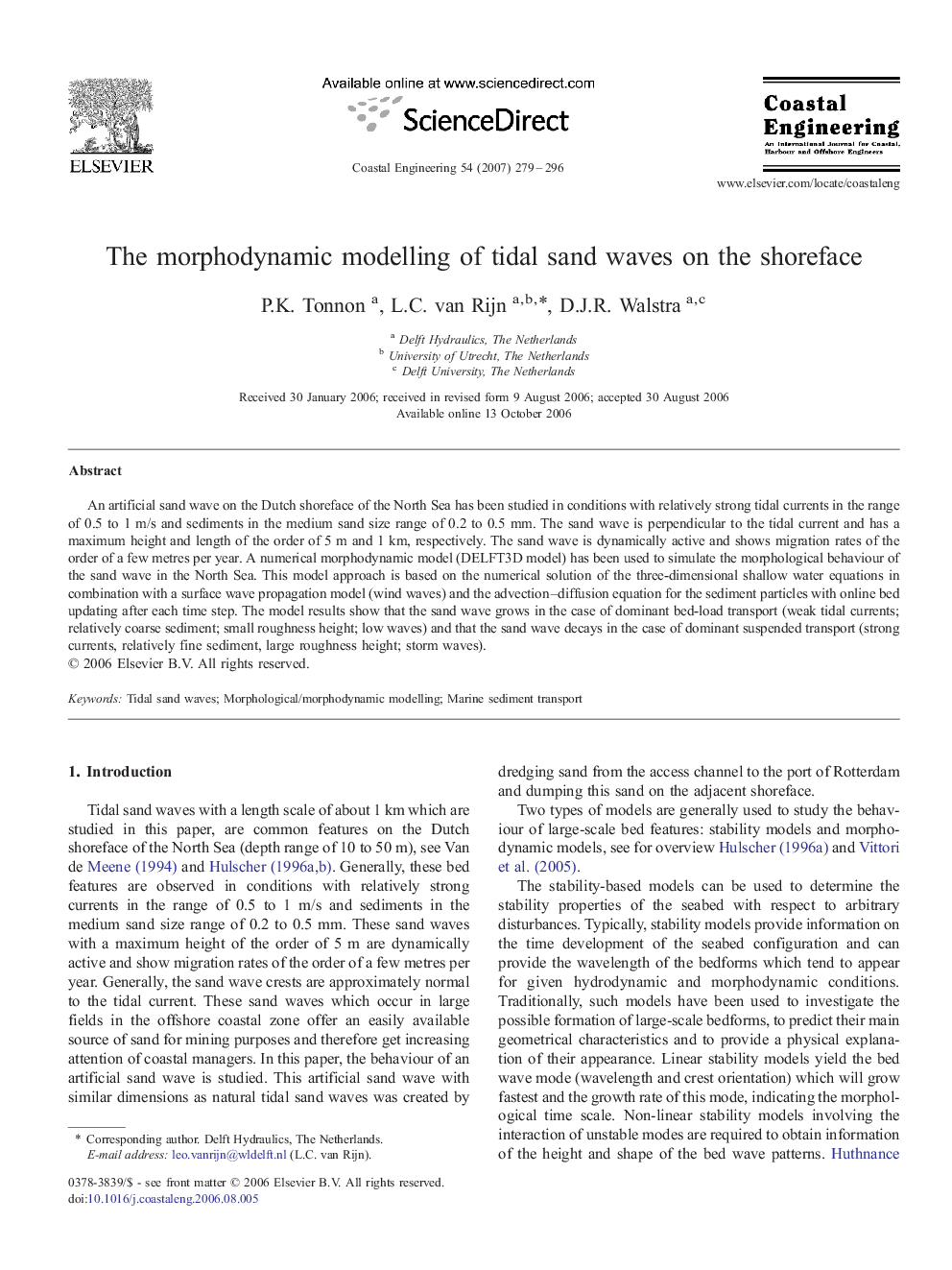| Article ID | Journal | Published Year | Pages | File Type |
|---|---|---|---|---|
| 1721557 | Coastal Engineering | 2007 | 18 Pages |
An artificial sand wave on the Dutch shoreface of the North Sea has been studied in conditions with relatively strong tidal currents in the range of 0.5 to 1 m/s and sediments in the medium sand size range of 0.2 to 0.5 mm. The sand wave is perpendicular to the tidal current and has a maximum height and length of the order of 5 m and 1 km, respectively. The sand wave is dynamically active and shows migration rates of the order of a few metres per year. A numerical morphodynamic model (DELFT3D model) has been used to simulate the morphological behaviour of the sand wave in the North Sea. This model approach is based on the numerical solution of the three-dimensional shallow water equations in combination with a surface wave propagation model (wind waves) and the advection–diffusion equation for the sediment particles with online bed updating after each time step. The model results show that the sand wave grows in the case of dominant bed-load transport (weak tidal currents; relatively coarse sediment; small roughness height; low waves) and that the sand wave decays in the case of dominant suspended transport (strong currents, relatively fine sediment, large roughness height; storm waves).
